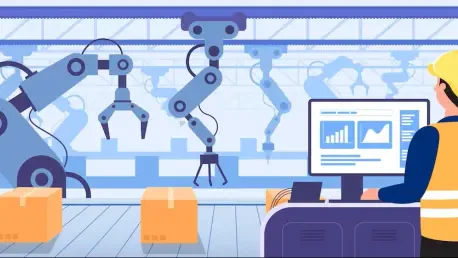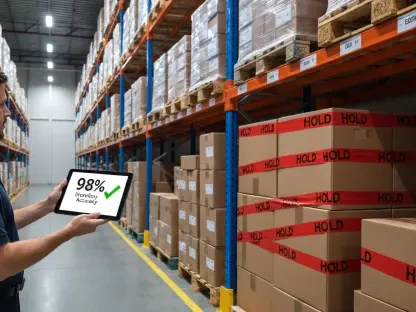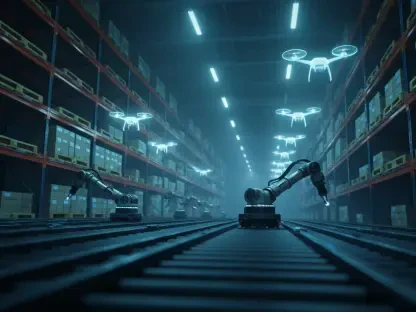In the heart of a bustling industrial hub, machines hum with precision, producing goods at a pace no human workforce could match, yet across the manufacturing sector, a stark divide emerges. While some companies race ahead with cutting-edge automation, nearly half are uncertain if they can keep up with the rapid changes. A recent survey of 128 industry leaders reveals a troubling reality: 49% lack confidence in their strategies for the next three years. This isn’t just a statistic; it’s a warning sign of an industry teetering on the edge of a transformative shift, where adaptation could mean the difference between thriving and obsolescence.
The stakes couldn’t be higher as automation, driven by artificial intelligence and robotics, reshapes the manufacturing landscape. With global competition intensifying and supply chain disruptions becoming commonplace, the ability to modernize isn’t a luxury—it’s a necessity. This pressing issue demands attention, as the gap between leaders and laggards widens. Delving into the challenges, trends, and voices from the field, the following exploration uncovers why readiness for this technological wave is critical and what can be done to bridge the divide.
The Urgency of Automation: Is the Industry Lagging?
The clock is ticking for manufacturers to embrace automation, yet many seem caught off guard. Data from a comprehensive industry survey indicates that nearly half of the sector’s leaders are unsure about aligning their plans with future business goals. This hesitation isn’t a minor concern; it reflects a broader struggle to match the rapid pace of technological advancements. As AI and robotics redefine production capabilities, the risk of falling behind looms large for those slow to act.
This uncertainty isn’t just about adopting new tools—it’s about reimagining entire operational frameworks. Two-thirds of surveyed companies admit to hesitating on fully integrating automation, citing fears of disruption or failure to adapt. With labor shortages and rising costs adding pressure, the need to pivot toward machine-driven processes becomes undeniable. The question remains: how long can the industry afford to delay before the gap becomes unbridgeable?
Automation as a Survival Imperative
Beyond mere innovation, automation stands as a cornerstone for survival in today’s competitive market. Manufacturers face relentless demands for efficiency and cost reduction, especially amidst ongoing global supply chain challenges. The push toward automated systems offers a solution, enabling companies to streamline operations and respond swiftly to market shifts. Those who have already invested in such technologies report significant gains, setting a benchmark others must meet to stay relevant.
The evidence is clear—firms that fail to modernize risk losing ground to rivals who leverage robotics for faster, cheaper production. A striking 66% of industry leaders identify aligning supply chain and manufacturing operations as their greatest obstacle, underscoring the complexity of this transition. Without bold steps to integrate advanced systems, companies could find themselves outpaced in an era where agility defines success.
Diving into Readiness: Challenges and Emerging Trends
A closer look at the industry’s state reveals a mix of ambition and apprehension. The survey highlights that 49% of manufacturing leaders doubt their strategies will hold up over the next few years, often due to slow operational redesign. Resistance to adopting AI and robotics persists, with many firms stuck in outdated models that hinder progress. This disconnect between vision and execution creates a bottleneck, stalling the journey toward full automation.
On the other hand, trends point to a future dominated by minimal human oversight in production tasks. Leaders predict a sharp rise in machine-handled operations, viewing this as a top factor for maintaining a competitive edge. Yet, structural barriers, such as misaligned governance, prevent many from capitalizing on these advancements. Notably, companies under a Chief Supply Chain Officer are 68% more likely to achieve seamless integration compared to those under other leadership structures, signaling the importance of strategic alignment.
On the Ground: Real Stories of Automation Struggles and Successes
Insights from industry insiders paint a vivid picture of the automation journey. Simon Jacobson, a Vice President Analyst at a leading research firm’s Supply Chain practice, stresses, “Leaders must reinvent operating models to prioritize advanced automation, where machines take on most tasks, to remain competitive.” His words echo the urgency felt by many in the field, where the inevitability of change clashes with practical hurdles. The sentiment is clear—transformation is coming, whether companies are prepared or not.
From factory floors, contrasting experiences emerge. Some manufacturers have piloted AI-driven tools, marveling at quicker decision-making and enhanced output. Others, however, remain tethered to manual methods, wary of the cultural upheaval automation demands. These real-world accounts highlight a critical truth: readiness isn’t solely about technology; it requires a fundamental shift in mindset and organizational structure to truly take hold.
Building the Path Forward: Steps to Embrace Automation
For those aiming to navigate this revolution, actionable strategies offer a lifeline. One key step is to redefine roles for plant managers, moving away from rigid control to fostering data-driven decisions powered by AI. This shift involves digital training and empowering teams to act independently, breaking away from entrenched habits. Such changes lay the groundwork for a more responsive and innovative workforce.
Another vital move is modernizing production systems across facilities. Standardizing technology, integrating emerging tools, and setting clear digital targets can enhance coordination and efficiency. Additionally, shifting decision-making authority closer to the factory floor, supported by automated systems, enables faster reactions to challenges. These efforts, while demanding, signal a commitment to adaptability over complacency.
Finally, leadership alignment proves essential in driving this transition. Structures that prioritize roles like the Chief Supply Chain Officer often see stronger integration and quicker results. By dismantling outdated processes and fostering a culture of innovation, manufacturers can position themselves not just to survive but to lead in an automated future. The path is challenging, yet the rewards for those who commit are substantial.
Reflecting on the Journey and Next Moves
Looking back, the journey through the manufacturing sector’s automation challenges revealed a landscape of uncertainty and opportunity. Leaders grappled with doubts, as nearly half questioned their readiness for what lay ahead. Yet, amidst the struggles, stories of innovation and bold steps forward emerged, painting a picture of an industry at a pivotal moment.
Moving into the past context, the focus shifted to actionable solutions that had been proposed. Recommendations to reset governance, modernize systems with cutting-edge tools, and empower factory-level decisions stood out as critical. These strategies weren’t mere suggestions; they were lifelines for companies that had aimed to thrive amid rapid change.
In hindsight, the broader implication became evident—success in that era demanded more than technology; it required a cultural evolution. Manufacturers who had embraced adaptability and aligned their leadership structures likely found themselves better positioned. For others, the lesson was clear: the time to act had been then, with a focus on building resilient, forward-thinking operations to meet the demands of an automated world.









